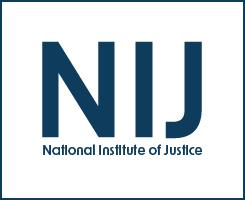In Silico Created Fire Debris Data for Machine Learning
Date Published
March 2025
Journal
Forensic Chemistry
Agencies
NIJ-Sponsored
Analyst and machine learning opinions in fire debris analysis
Date Published
2023
Journal
Forensic Chemistry
Agencies
NIJ-Sponsored
Convolutional Neural Network Applications in Fire Debris Classification
Date Published
September 2022
Journal
Chemosensors
Agencies
NIJ-Sponsored
Validation of ground truth fire debris classification by supervised machine learning
Date Published
December 2021
Journal
Forensic Chemistry
Agencies
NIJ-Sponsored
Classification of ground-truth fire debris samples using artificial neural networks
Date Published
2021
Journal
Forensic Chemistry
Agencies
NIJ-Sponsored
Application of Self-Organizing Maps to the Analysis of Ignitable Liquid and Substrate Pyrolysis Samples
Date Published
2018
Journal
Separations
Agencies
NIJ-Sponsored
Model-effects on Likelihood Ratios for Fire Debris Analysis
Date Published
2018
Journal
Forensic Chemistry
Agencies
NIJ-Sponsored
Model Distribution Effects on Likelihood Ratios in Fire Debris Analysis
Date Published
2018
Journal
Separations
Agencies
NIJ-Sponsored
Major Chemical Compounds in the Ignitable Liquids Reference Collection and Substrate Databases
Date Published
September 2017
Journal
Forensic Chemistry
Agencies
NIJ-Sponsored
Biodegradation of Representative Ignitable Liquid Components on Soil
Date Published
2017
Journal
Forensic Chemistry
Agencies
NIJ-Sponsored
Class-conditional feature modeling for ignitable liquid classification with substantial substrate contribution in fire debris analysis
Date Published
2015
Journal
Forensic Science International
Agencies
NIJ-Sponsored
Application of self-organizing feature maps to analyze the relationships between ignitable liquids and selected mass spectral ions
Date Published
2014
Journal
Forensic Science International
Agencies
NIJ-Sponsored
Combined target factor analysis and Bayesian soft-classification of interference-contaminated samples: Forensic Fire Debris Analysis
Date Published
2012
Journal
Forensic Science International
Agencies
NIJ-Sponsored
Research Forensic Library
We invite you to also search the Research Forensic Library, a curated collection of publicly-accessible material relating to every discipline of the forensic sciences.


